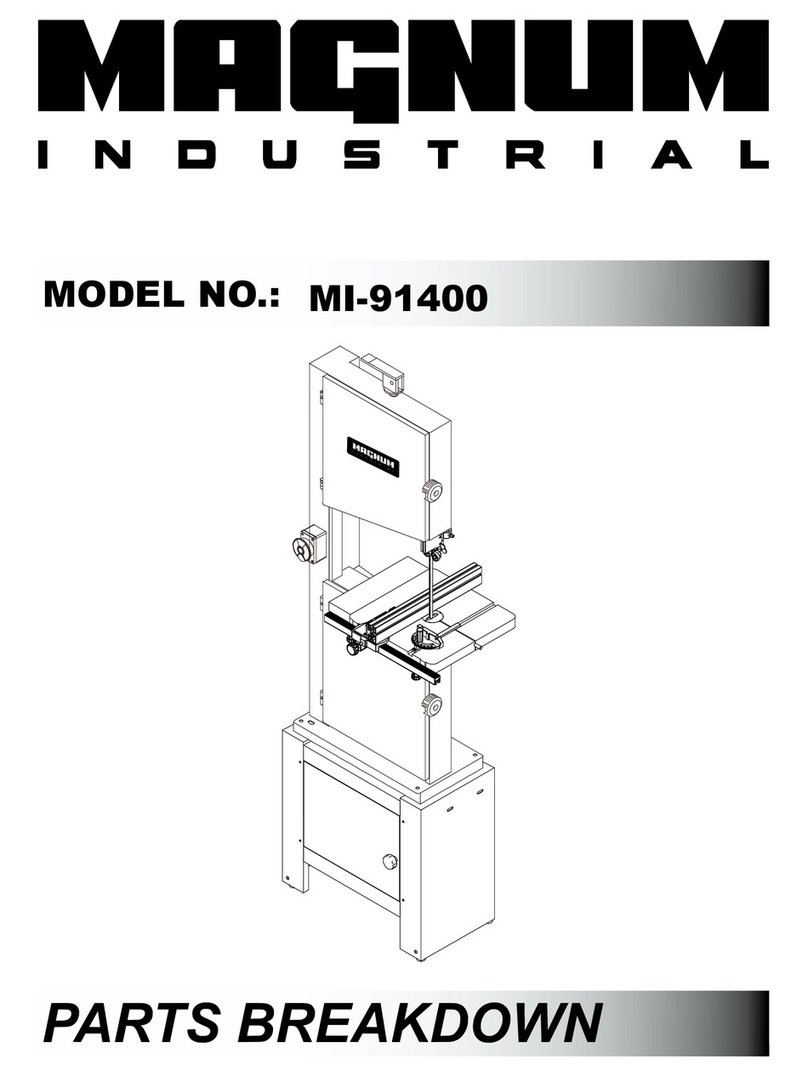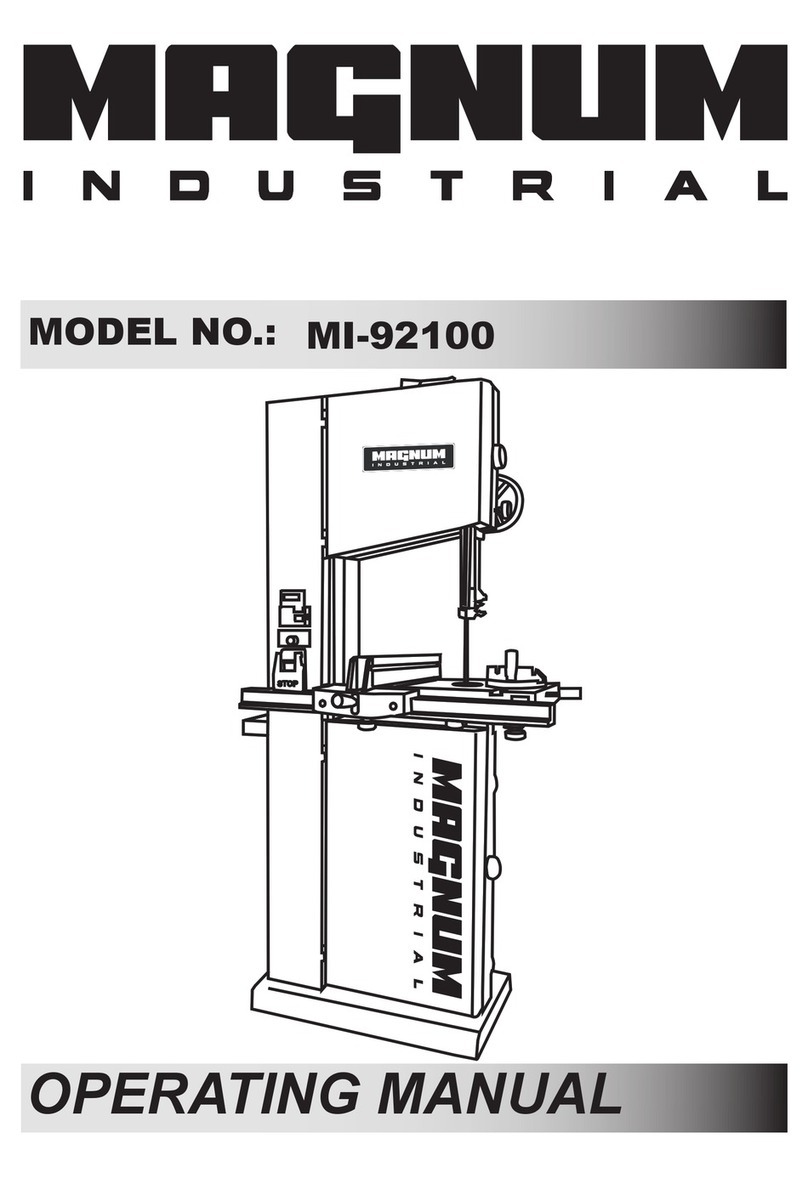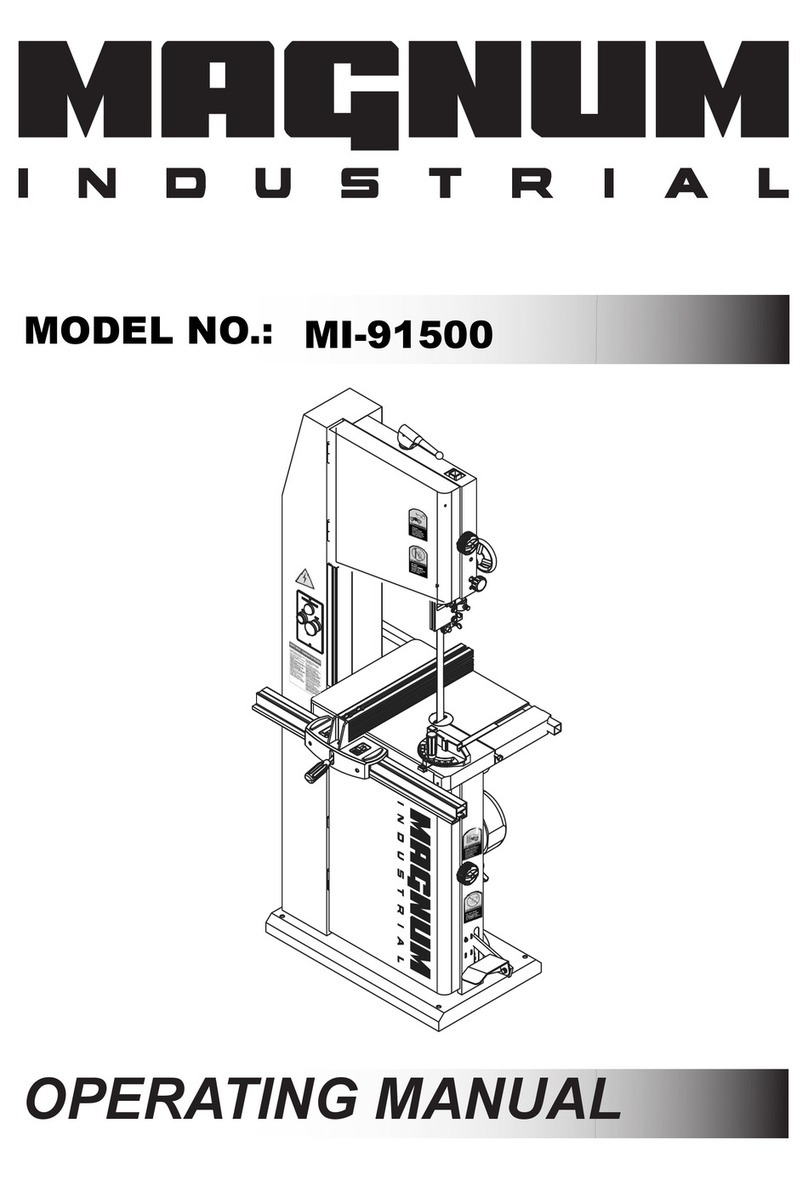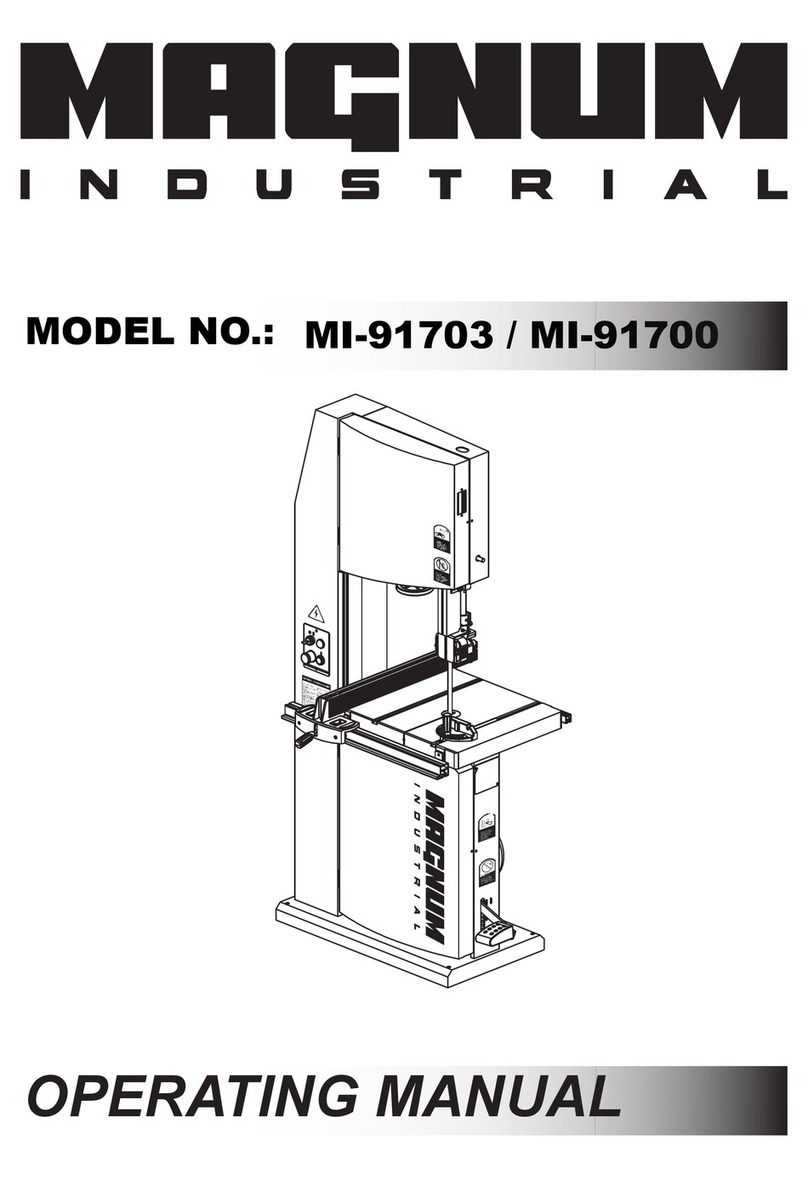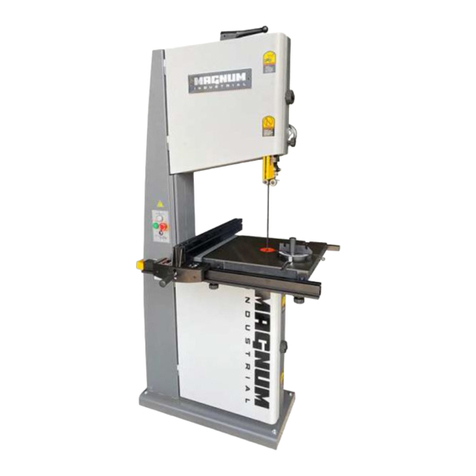
- 5 -
․ Never cut freehand:
a. Brace your workpiece solidly
against the fence and table top
so it will not rock or twist during
the cut. Make sure no debris is
caught beneath the workpiece.
b. Make sure no gaps between the
workpiece, fence and table will
let the workpiece shift after it is
cut in two.
c. Use jigs, fixture or a different tool
for unstable workpieces.
․ Never cut more than one
workpiece at a time.
․ Make sure the cut-off piece can
move sideways after it is cut off.
Otherwise, it could get wedged
against the blade and thrown
violently.
․ Make sure bystanders are clear
of the tool and workpiece. Keep
them clear of the area behind the
saw where debris will be thrown.
․ Never turn your metal saw “ON”
before clearing everything except
the workpiece and related
support devices off the table.
D. To avoid risk of hearing damage,
wear ear plugs or muffs during
extended period of operation.
E. To avoid being suddently pulled into
the blade:
․ Do not wear gloves.
․ Remove all jewelry and loose
clothing.
․ Tie back long hair.
․ Roll long sleeves above the
elbow.
F. To avoid injury from accidental
starting, always unplug saw before
disconnecting the guard, installing or
removing any blade, accessory or
attachment, or making any
adjustment.
G. To avoid an electrical shock, make
sure your fingers do not touch the
metal prongs on the plug when
inserting or removing the plug to or
from a live outlet.
H. Never put lubricants on the blade
while it is spinning.
I. To avoid burns or other fire damage,
never use the saw near flammable
liquids, vapors or gases.
J. To avoid injury from unsafe
accessories use only accessories
shown on the recommended
accessories list in this manual.
Whenever Saw is Running
WARNING: Do not allow familiarity
(gained from frequent use of your
metal saw) to cause a careless
mistake. Always remember that a
careless fraction of a second is
enough to cause a severe injury.
1. Before actually cutting with the saw, let it
run for a while. If your saw makes an
unfamiliar noise or if it vibrates
excessively, stop immediately. Turn the
saw off. Unplug the saw. Do not restart
until finding and correcting the problem.
2. Never confine the piece being cut out.
Never hold it, clamp it, touch it, or use
length stops against it. It must be free to
move sideways. If confined, it could get
wedged against the blade and thrown
violently.
3. Avoid awkward hand positions where a
sudden slip could cause a hand to move
into the blade.
4. Let the blade reach full speed before
cutting.
5. Feed the saw into the workpiece only fast
enough to let the blade cut without
bogging down or binding.
